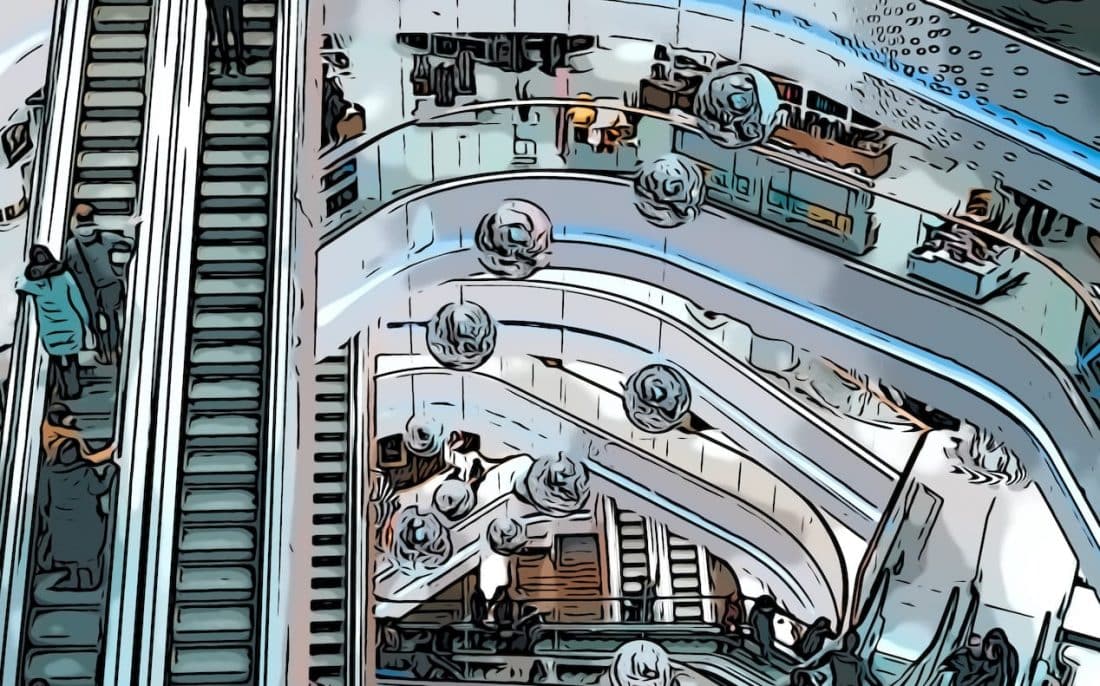In this modern era of technological advancements, it would be wrong to say that the retail market isn’t seeing similar growth. The number of online customers is evolving swiftly, and demands for more personalization are emerging. Retail industries are becoming more powerful as they are integrating with the latest artificial intelligence tools.
In 2019, the global market size of location intelligence was valued at USD 10.6 billion, and it is estimated to expand at a CAGR of 15.2% over the forecast period. Moreover, according to GSMA, the total number of IoT connections accounted for 9.1 billion in 2018 and is estimated to reach over 25.2 billion in the same period.
Location intelligence is becoming more crucial for retailers with every passing day in providing measurable offline results, scalable audience insights, and better audience targeting.
Here are the five ways how location intelligence proves to be revolutionizing retail industries.
Customer Insights
If retail leaders start utilizing location intelligence, this can prove beneficial for them by provoking valuable customer insights. Technology can be used for this purpose called geo-enrichment. This technology efficiently converts customer’s residential addresses into useful insights. This way, retailers can utilize modern geographic information systems to generate smart maps and identify customer’s popular locations accurately and effectively. Retailers can accumulate information about numerous customer demographics and their behaviors. This helps business leaders to develop a better understanding of customer localities that are loyal. Business owners can optimize staff performance and have a better customer behavior experience by incorporating location intelligence in retail industries.
Indoor mapping of retail shops is another thing that can immensely help with customer insights. Using this technology, retail stores can learn buying patterns of customers and then use this data to push different kinds of products and promotions.
Trade Area Analysis
Trade area analysis is essential for retailers to select suitable locations of a new store, define sales targets, and study competitor strength. Retailers can choose appropriate stores where they can easily access their target audience with trade area analysis. Location intelligence helps business owners have real-world insights about different customer demographics and behaviors around prospective retail sites.
Also, business leaders can better understand which other locations their customers will consider for shopping. Thanks to location intelligence, retailers can collect data to measure customer trends and whether the customer demographic is growing or shrinking in a particular area. Location intelligence can offer data-driven approaches for trade area analysis in retails.
Asset Tracking
Retail businesses require a wide range of products to meet the ever-changing demands of customers. Late product delivery set’s a wrong impression on customers. This immensely affects customer delivery and staff productivity. Retailers can continuously track the location of their delivery staff and for the management of supply chains. Thankfully, location intelligence can also immensely usher identity verification of retail store staff members during asset tracking.
Retailers can develop custom location applications that can be easily installed on mobile devices of their delivery staff. Location intelligence helps with asset tracking and can prove to be beneficial for business retailers. Business owners can track the precise location of a delivery executive in real-time and calculate accurate ETA. This way, retailers can track the location of all delivery executives on a centralized system.
Virtual Geo-Fences
Retails can set up virtual geo-fence for marketing. Business owners have the liability to define a certain radius around their store based on their store size. By utilizing this, retailers can push notifications regarding ongoing product discounts, deals, and offers when customers get in and out of geo-fence. Retailers can alert their customers by using this approach about products and discounts when they are in proximity to the store. Moreover, retailers can utilize innovative machine learning and artificial intelligence algorithms to improve sales and product suggestions.
Let us consider an example. Suppose a customer wants to purchase coffee. There’s a high possibility that the same customer wants sugar and milk. Location intelligence is utilized for enhanced product suggestions and allows retailers to prepare themselves for ever-changing customer preferences.
Competitive Strength Analysis
Analysis of the competitor market is mandatory for retailers and business owners before selecting a new retail site. Location intelligence proves to be a game-changer in this scenario. Location intelligence assists business owners in measuring competitor’s market share and perforation in a particular geographical location. Also, this helps retailers to understand customer’s loyalty to themselves and their competitors. If their customers tend to visit other stores, the retailers can utilize this opportunity in the best possible way and capture less loyal customers of their competitors. A retailer can use Data-driven approaches with the help of location intelligence.
Invest Today For Long Term Business Protection
Location intelligence has great potential to protect your business against criminal acts and fraudulent activities in the long term. Today, everything is prone to digitization due to the rapid evolution of technologies. The utilization of data and insights from experts for efficient and accurate business decisions is becoming a new normal, proving to be revolutionizing the world.
In this current competitive environment, if you want to enhance your business’s security, it’s high time to invest in location intelligence technology. The utilization of local-based data helps the identification of those areas where you are overspending and underspending. Moreover, it helps develop a better understanding of your business operations and identity area of enhancements and how your retail store operates. It is much more straightforward to prove your compliance to stakeholders and customers with precise and versatile map data. Just start investing today for the long-term protection of your businesses.
James is the head of marketing at Tamoco

